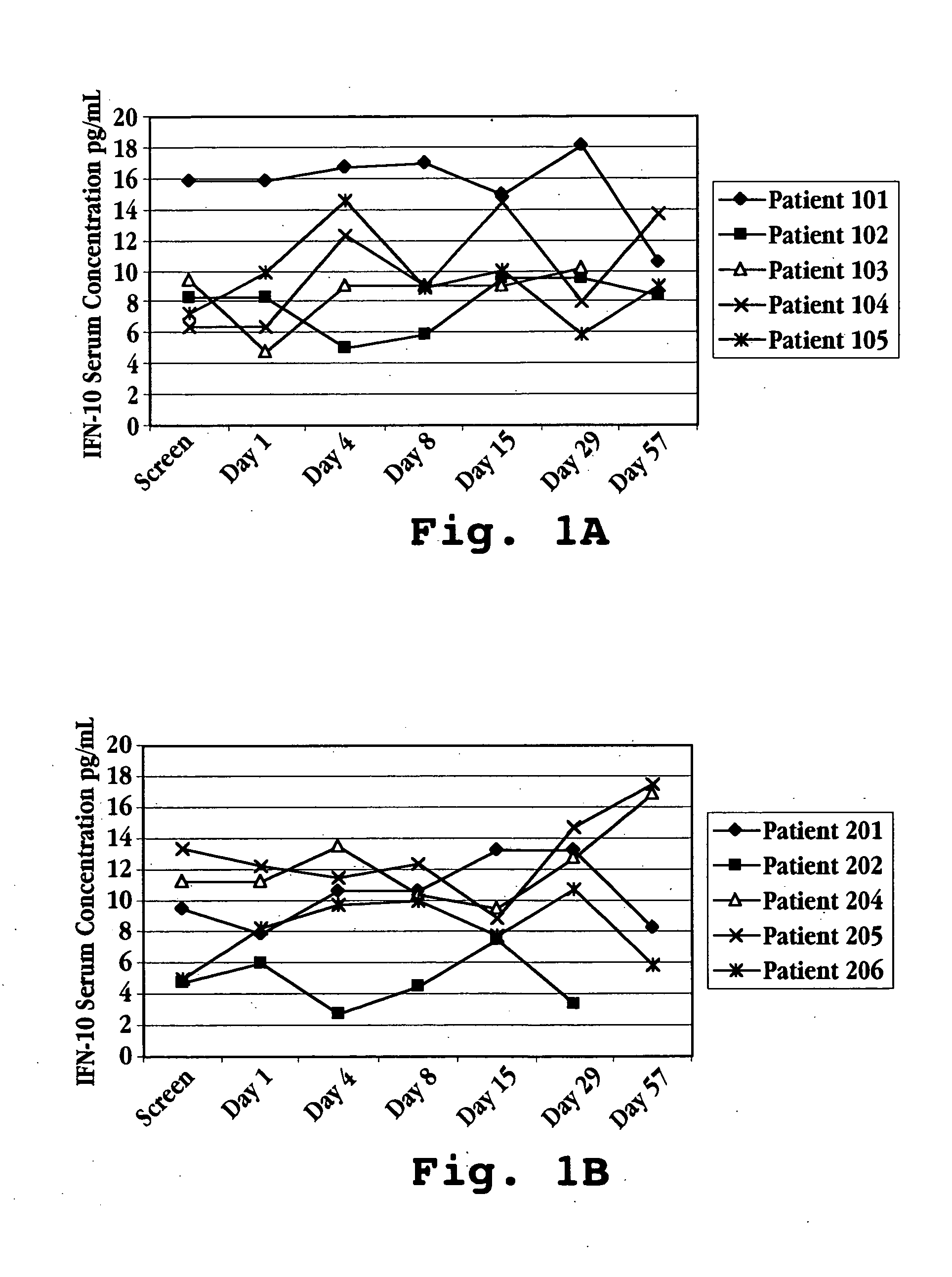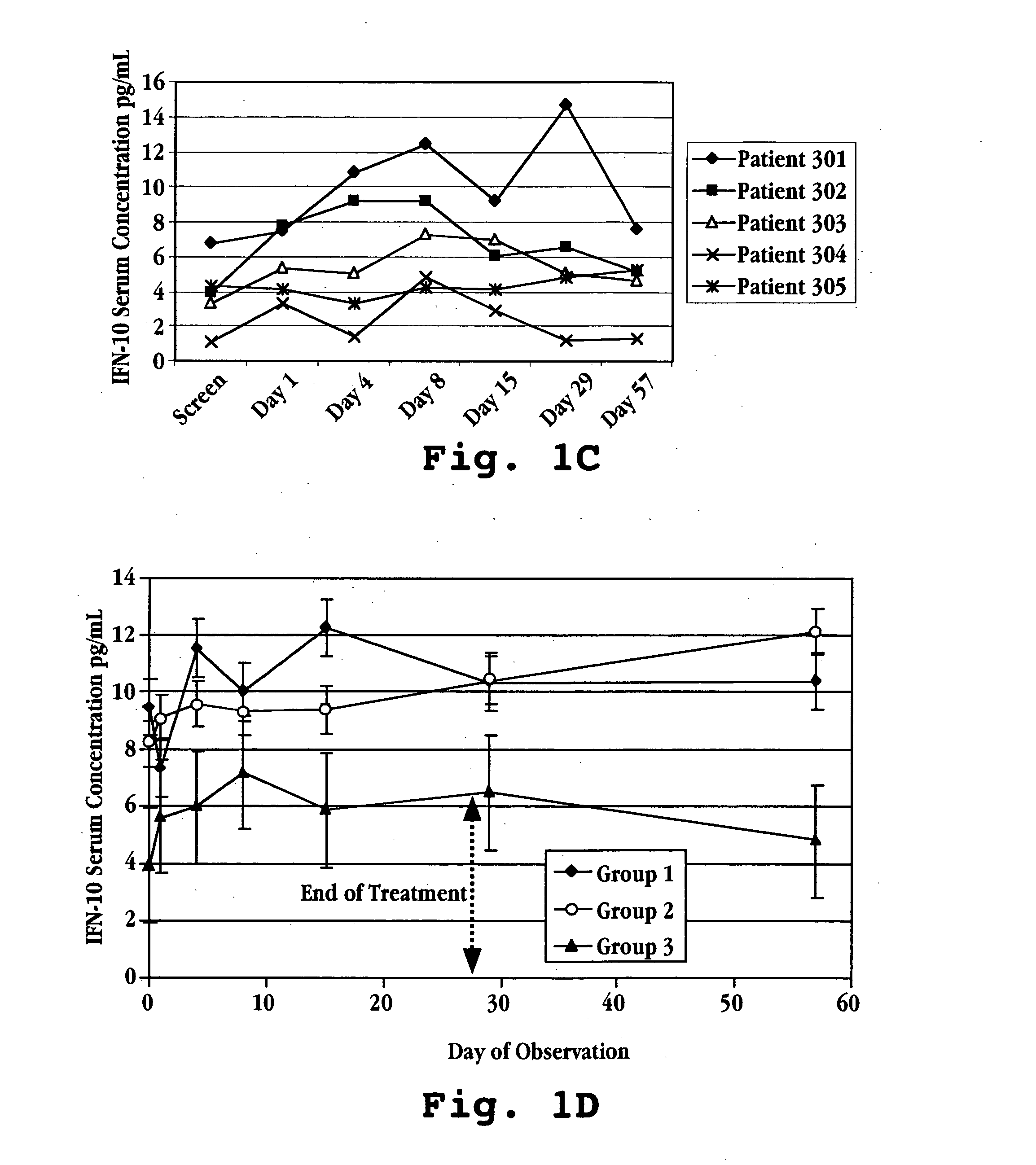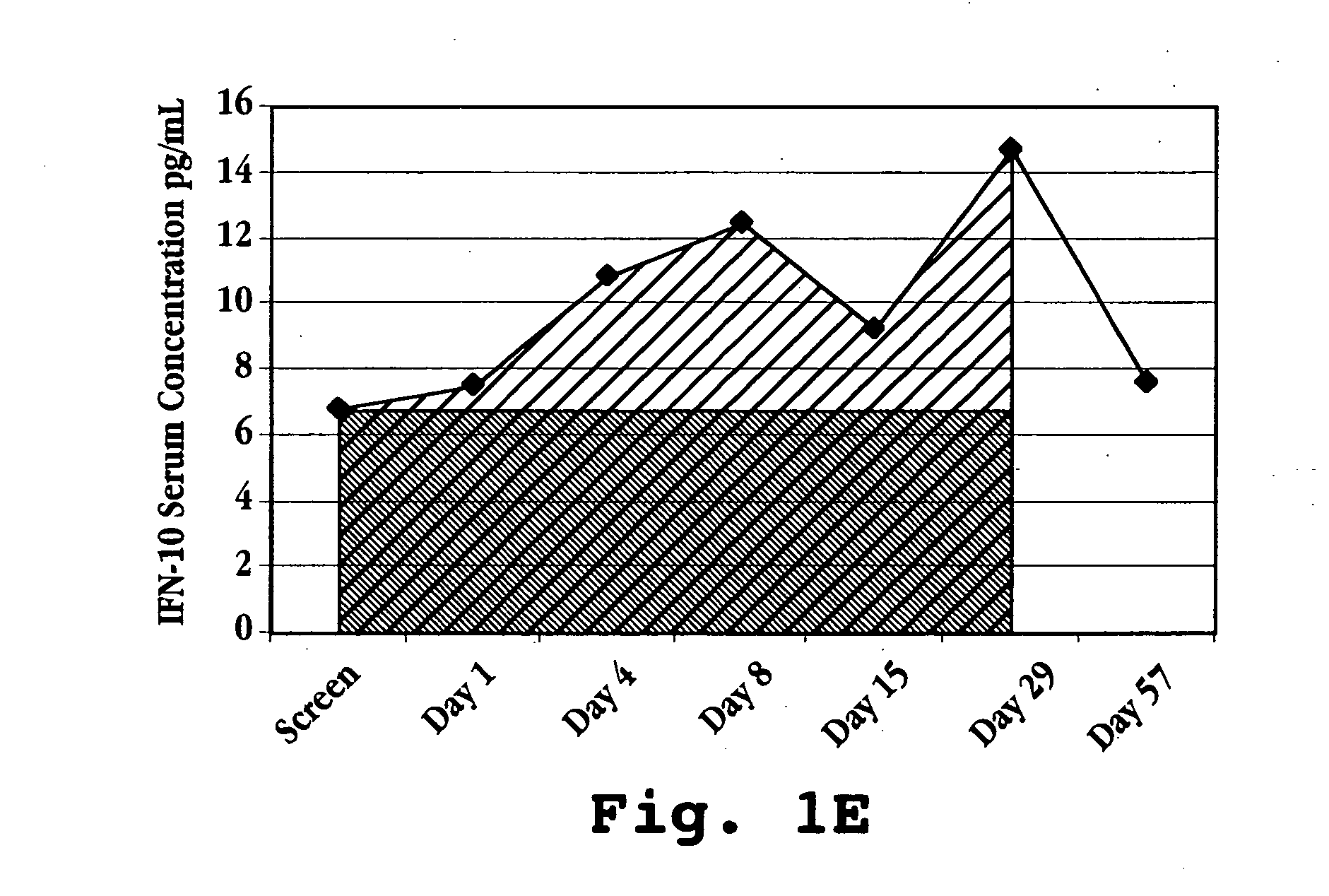Method of optimizing treatment with interferon-tau
a technology of interferon and treatment, applied in the direction of pharmaceutical active ingredients, peptide/protein ingredients, and vector-borne diseases, can solve the problems of much lower levels of anti-ifn- antibodies in the serum of treated laboratory animals, and achieve the effect of increasing the serum il-10 level and reducing the serum level
- Summary
- Abstract
- Description
- Claims
- Application Information
AI Technical Summary
Benefits of technology
Problems solved by technology
Method used
Image
Examples
example 1
Determination of Cytokine Levels
[0092] This example illustrates one method for determining IL-10 response in a patient. As discussed above, the IL-10 response is a measure of the extent to which serum IL-10 levels have changed in the patient as a result of IFN-τ administration. In the method described in this example, IL-10 response is calculated as the ratio of the area-under-the-curve (AUC) for serum IL-10 levels over an initial treatment period to the level of serum IL-10 that would be expected over the same period in the absence of any treatment, i.e., a baseline IL-10 level.
[0093]FIG. 12E illustrates how this value is determined. The IL-10 levels in the figure are taken from an MS patient (patient 302 in FIG. 1C) who is receiving a daily oral dose of 1.8 mg over a period of Day 1 to Day 28. At Day 29, the treatment is discontinued. The AUC for IL-10 response is the total area under the curve defined by the IL-10 measurements in the treated patient. The baseline value may be c...
example 2
Initial-Treatment IL-10 Level Response in MS patients
[0096] This example illustrates a typical relationship between initial-treatment dose of IFNτ and IL-10 response measured over an initial treatment period of 28 days. The human patients in this study had multiple sclerosis and were enrolled in a trial for treatment with IFNτ. Fifteen patients were randomized into three treatment groups (see Table 2 above): Group I patients were given IFNτ orally at a dosage of 0.2 mg per day (2×107 U / day) Group II patients were given IFNτ orally at a dosage of 0.8 mg per day (8×107 U / day); and Group III patients were given IFNτ orally at a dosage of 1.8 mg per day (1.8×108 U / day), the patients in each group receiving a once daily dose for 29 days.
[0097] Prior to treatment with IFNτ, on screening Day and Day 1 (one), a blood sample was taken from each subject to determine a baseline serum cytokine concentration. Treatment was initiated by administering IFNτ orally to each patient following the bl...
example 3
Initial-Treatment IL-10 Level Response in HCV Patients
[0103] This example illustrates the application of the method of the invention to patients diagnosed in an active hepatitis C viral (HCV) infection. The dosing schedule for three groups of patients is shown in Table 6.
TABLE 6Recombinant Ov-IFN-τ Patient Dose AdministrationVolumeNumber(mL)DoseofIFN-τper DoseTotal DailyTotal DailyGroupPatients(mg / mL)(TID)Dose (mg)Dose (U)I61.00.331.01 × 108II61.01.03.03 × 108III61.03.09.09 × 108
[0104] All vials of test material and syringes were kept in a refrigerator maintained at 2 to 8° C. Prior to the self-administration of medication, the patient removed one vial and one syringe from the refrigerator. The cap was removed from the tip of the syringe and the tip of the syringe was placed into the bottle of medication to withdraw the appropriate into the syringe as instructed at the clinic on Day 1.
[0105] The tip of the syringe was placed in the mouth and the syringe contents were emptied int...
PUM
| Property | Measurement | Unit |
|---|---|---|
| body weight | aaaaa | aaaaa |
| time | aaaaa | aaaaa |
| body weight | aaaaa | aaaaa |
Abstract
Description
Claims
Application Information
 Login to View More
Login to View More - R&D
- Intellectual Property
- Life Sciences
- Materials
- Tech Scout
- Unparalleled Data Quality
- Higher Quality Content
- 60% Fewer Hallucinations
Browse by: Latest US Patents, China's latest patents, Technical Efficacy Thesaurus, Application Domain, Technology Topic, Popular Technical Reports.
© 2025 PatSnap. All rights reserved.Legal|Privacy policy|Modern Slavery Act Transparency Statement|Sitemap|About US| Contact US: help@patsnap.com



